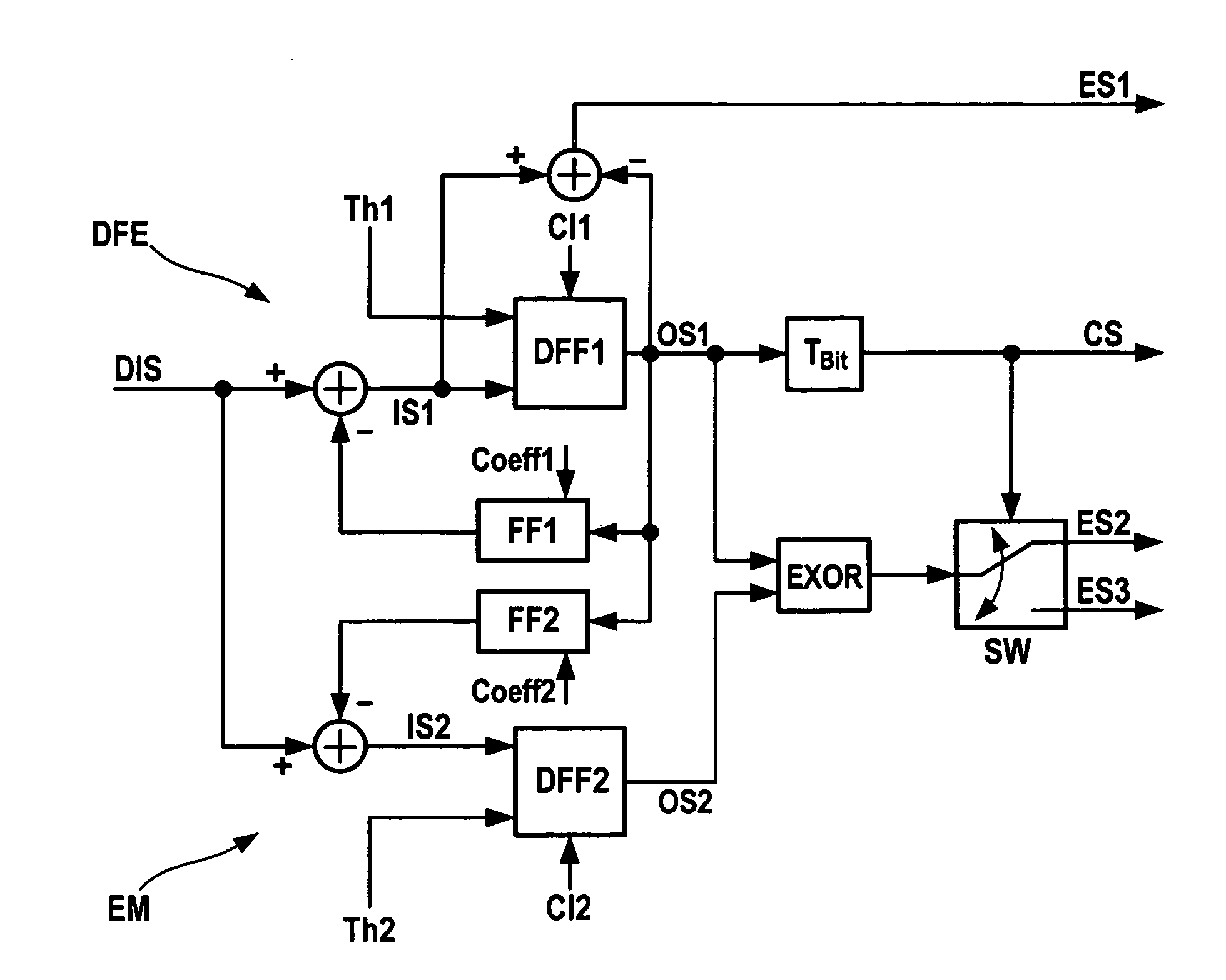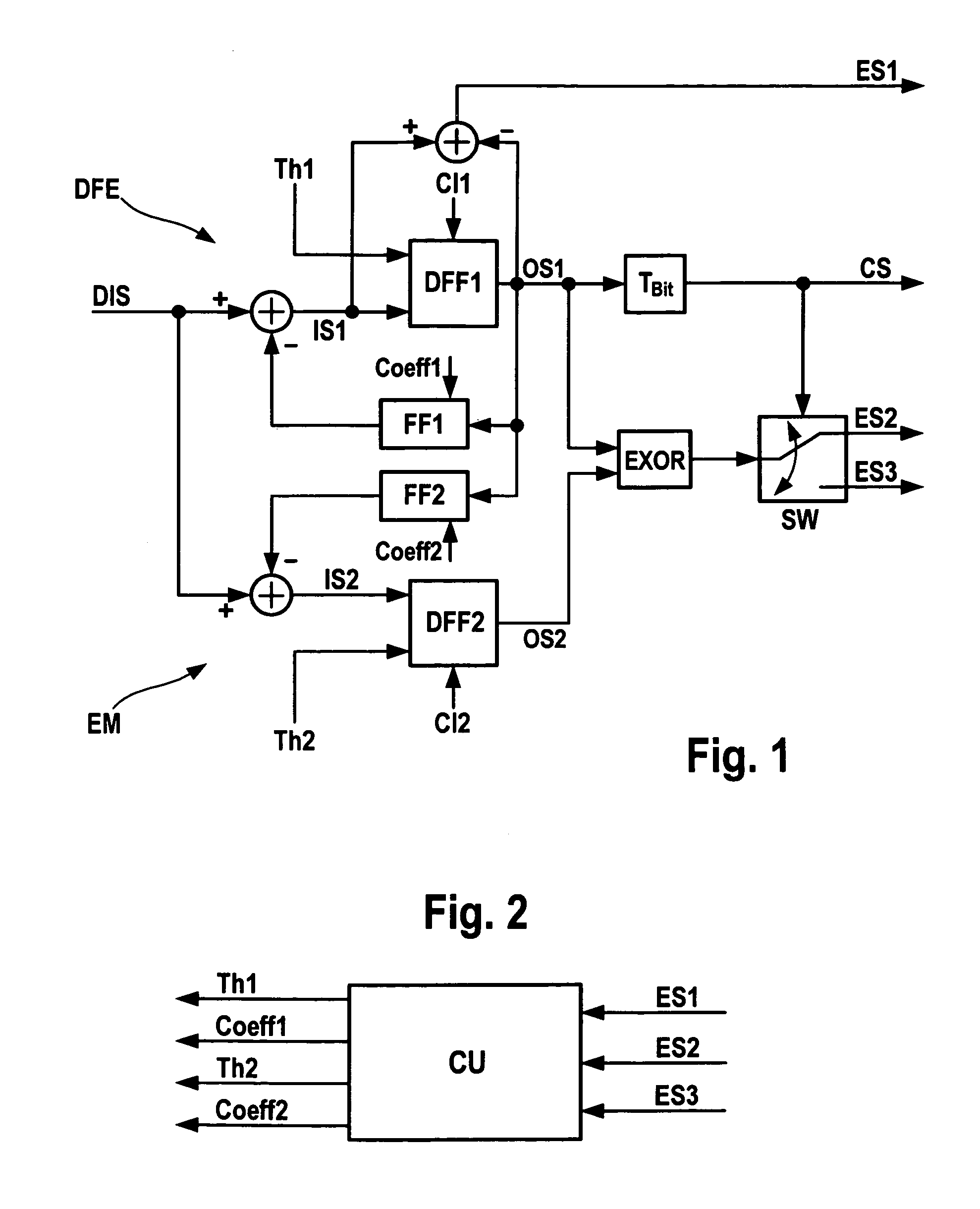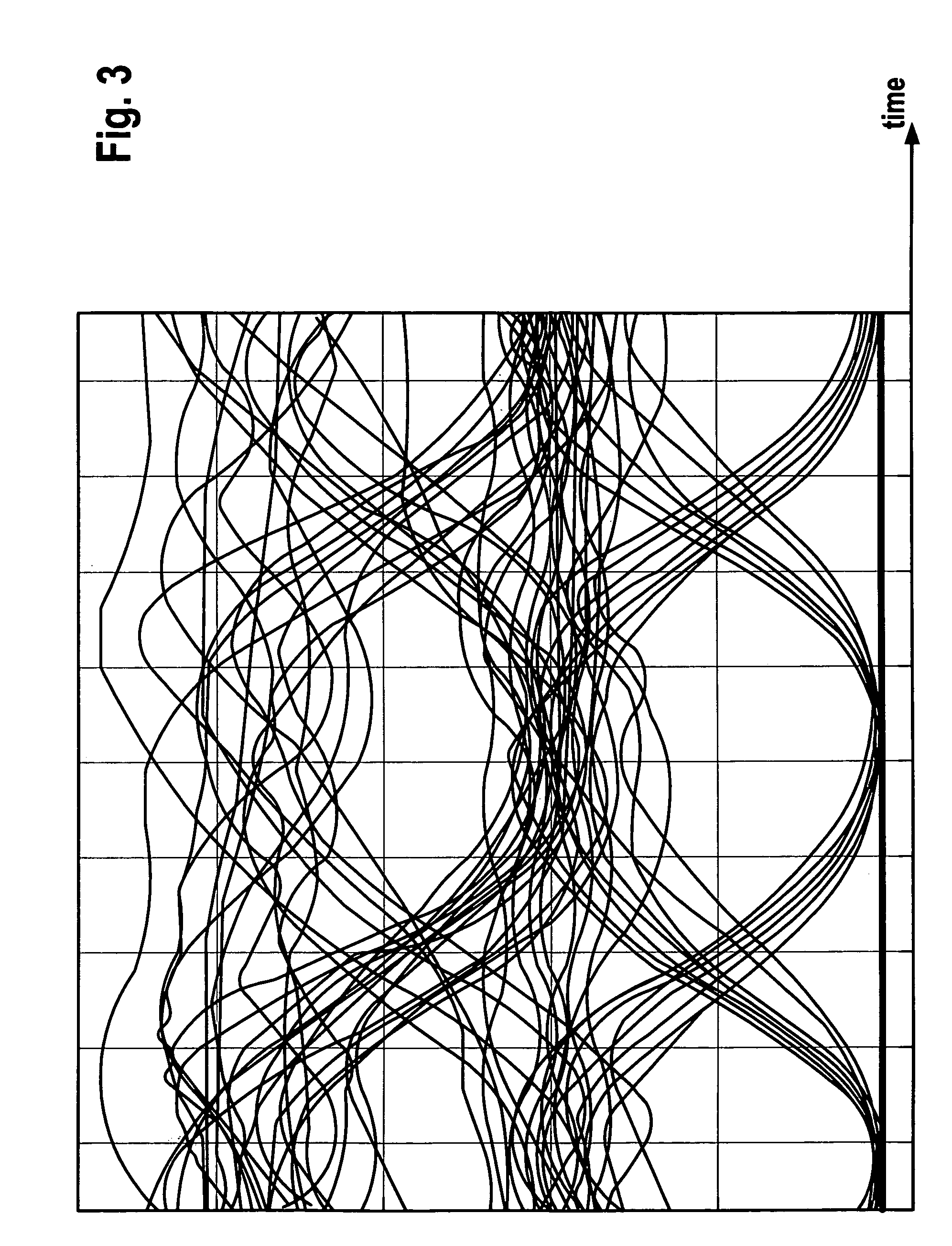Receiver for an optical signal
a technology for optical signals and receivers, applied in the field of optical communication systems, can solve the problems of optimum adaptation, bit error rate not minimized, optical signal distorted with so-called inter-symbolic interference, etc., and achieve the effects of improving receivers, reducing bit error rates, and increasing the corruption of input signals
- Summary
- Abstract
- Description
- Claims
- Application Information
AI Technical Summary
Benefits of technology
Problems solved by technology
Method used
Image
Examples
Embodiment Construction
[0019]FIGS. 1 and 2 show parts of a receiver for an optical signal. In addition to the shown electrical circuits, the receiver comprises an opto-electrical converter that is connected to a fiber on which the optical signal is transmitted. Originally, the optical signal is generated as a binary signal. However, due to signal dispersion, the optical signal becomes distorted on its transmission along the fiber. The converter then receives the distorted optical signal and converts it into an electrical signal. The generated electrical signal is distorted, too, and is hereinafter called distorted input signal DIS.
[0020]According to FIG. 1, a first decision flip-flop DFF1 is provided that is part of a decision feedback equalizer DFE. The first decision flip-flop DFF1 may be adjusted by a first threshold signal Th1. As well, a first clock phase Cl1 is provided to the first decision flip-flop DFF1. The first decision flip-flop DFF1 generates a first output signal OS1 that is input to a firs...
PUM
 Login to View More
Login to View More Abstract
Description
Claims
Application Information
 Login to View More
Login to View More - R&D
- Intellectual Property
- Life Sciences
- Materials
- Tech Scout
- Unparalleled Data Quality
- Higher Quality Content
- 60% Fewer Hallucinations
Browse by: Latest US Patents, China's latest patents, Technical Efficacy Thesaurus, Application Domain, Technology Topic, Popular Technical Reports.
© 2025 PatSnap. All rights reserved.Legal|Privacy policy|Modern Slavery Act Transparency Statement|Sitemap|About US| Contact US: help@patsnap.com



